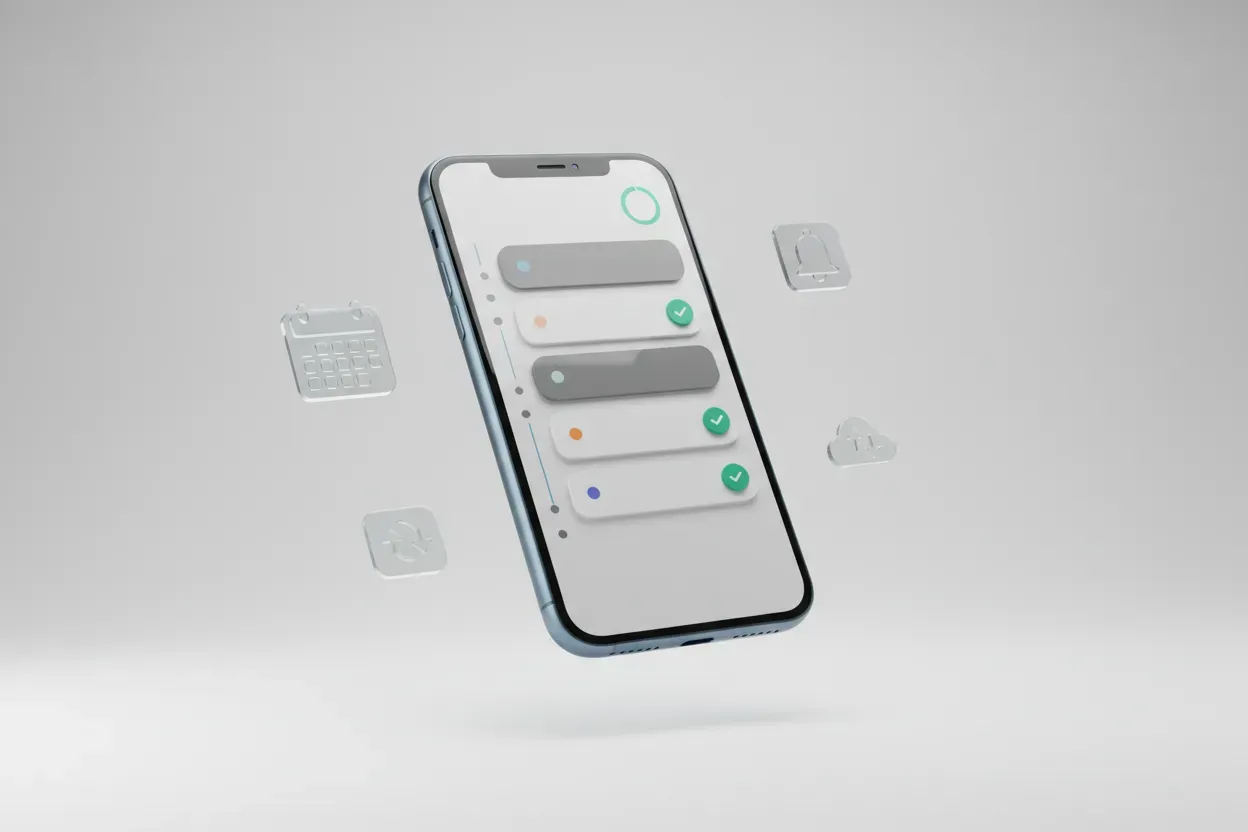Successful teamwork within a company depends on the seamless transition between leadership and collaboration roles. Insights from a CEO and a Head of People provide valuable perspectives. The first advice focuses on establishing clear communication norms, while the last emphasizes active listening, highlighting a collection of nine pieces of valuable insights. Get ready to explore actionable strategies that can transform the way teams function.
- Establish Clear Communication Norms
- Understand Your Role in Each Context
- Embrace a Servant-Leadership Mindset
- Embrace Adaptability in Project Planning
- Practice Mindful Listening
- Establish Clear Roles and Expectations
- Step Back and Let Team Lead
- Set Direction and Encourage Input
- Focus on Active Listening
Establish Clear Communication Norms
One effective tip for effectively switching between leading and collaborating is to establish clear communication norms. Establish and define: How you’ll communicate, when you’ll communicate, what you’ll communicate, and the frequency with which you’ll communicate. Keep in mind—leading and collaborating are different skill sets.
One tip is to set aside specific and separate meeting times for collaborative discussions. Set a meeting for where everyone’s input is encouraged and invited. Remember your facilitation skills to bring out engagement and input from the quiet participants to ensure all voices are heard. Then, separately, define moments when you will take the lead to make decisions or guide the direction.
By separating the two (leading and collaborating), this clarity helps team members understand when to contribute and when to follow. Separating the two fosters a balance between shared responsibility and leadership. Actively seeking feedback during collaborative phases can empower the team and reinforce a sense of shared ownership, making transitions feel more natural and inclusive. This can additionally boost a sense of engagement, inclusion, and belonging in your teams and across the organization.
 Mary Williams
Mary Williams
Head of People, Pinnacle Advertising
Understand Your Role in Each Context
As a leader in an organization, you will encounter numerous instances where you have to switch between leading and collaborating with your team. An effective way to help you manage this intricate balance is to always understand your role in each context.
As a leader, your team looks up to you for leadership. Your tasks include making effective decisions, setting clear objectives, and guiding the team toward achieving shared goals. All your actions must focus on selling a vision and inspiring your employees.
When collaborating within teams, you must adopt a supportive role. Here, the key is to be an active listener who welcomes other people’s ideas and contributes equally to discussions. Ensure that you avoid dominating the conversation and only focus on the overall good and success of the team.
 Clooney Wang
Clooney Wang
CEO, TrackingMore
Embrace a Servant-Leadership Mindset
Embrace a “servant-leadership” mindset. This means prioritizing your team’s needs while also guiding them toward our goals.
When it’s time to lead, I focus on setting clear expectations and providing direction. I ensure everyone knows their roles and what we aim to achieve. This clarity creates a strong foundation for collaboration.
Then, when it’s time to collaborate, I shift gears. I encourage open dialogue and value everyone’s input. I often say, “Let’s brainstorm together!” This approach not only empowers my team, but also sparks creativity and innovation.
To make the transition smoother, I like holding regular check-ins to discuss progress and any roadblocks. These meetings create a safe space for feedback and allow me to adjust my leadership style as needed. By being flexible and responsive, I can lead effectively while fostering a collaborative environment. This balance keeps our team engaged and motivated, driving us toward success together.
 Daisy Cabral
Daisy Cabral
Dynamic CEO, Bella All Natural
Embrace Adaptability in Project Planning
One effective tip for switching between leading and collaborating within your team is to embrace adaptability. During project-planning phases, I usually take the lead to outline clear goals and expectations, which helps set a solid foundation. Once that framework is in place, I consciously shift to a collaborative mindset, actively seeking input and insights from my team members.
This flexibility ensures that everyone feels valued and included, fostering a sense of ownership over the project. Start with well-defined guidelines to provide direction, then cultivate a culture of open dialogue, where diverse perspectives can thrive. By doing this, you can tap into your team’s collective creativity, leading to innovative solutions and a stronger team dynamic.
 Jeffrey Pitrak
Jeffrey Pitrak
Marketing Account Manager, Transient Specialists
Practice Mindful Listening
Practicing mindful listening is an effective tip for switching between leading and collaborating within my team. I focused primarily on steering discussions and ensuring we followed the agenda. However, I soon realized that true collaboration requires a shift in mindset.
During meetings, I aim not only to present my ideas but also to genuinely absorb my team’s thoughts and concerns. This balance creates an inclusive atmosphere where everyone feels valued and empowered to share their perspectives.
I encourage my team members to express themselves without fear of criticism, fostering creativity and innovation. By implementing regular check-ins and feedback sessions that prioritize listening, we cultivate trust, which ultimately leads to stronger and more cohesive teamwork.
 Matt Gehring
Matt Gehring
Chief Marketing Officer, Dutch
Establish Clear Roles and Expectations
I establish clear roles and expectations for each scenario. This clarity helps me maintain focus and flow, whether I’m leading or collaborating as a teammate.
When leading, I set the project vision and direction, ensuring everyone knows their responsibilities. I use structured meetings to outline objectives and deliverables, which keeps the team aligned. However, when it’s time to collaborate, I encourage open dialogue and input from everyone. I actively listen and create a space where team members feel comfortable sharing ideas and feedback.
A practical example of this approach was during a recent campaign brainstorming session. I started by presenting the project goals and framework, then shifted to a collaborative discussion where everyone contributed their ideas. By clearly defining when I was leading versus facilitating collaboration, the team felt empowered to express their creativity without losing sight of the overall objectives.
This dual approach enhances team cohesion and fosters a culture of shared ownership and innovation, making our projects more successful and enjoyable for everyone involved.
 Josh Bluman
Josh Bluman
Co-Founder, Hoppy Copy
Step Back and Let Team Lead
To switch between leading and collaborating, I know to step back and let the team take the reins. As a leader, it’s important to guide others and set the vision, but collaboration means empowering others.
You want to encourage team members to contribute their ideas instead of telling everyone what to do.
I ask for their input and actively listen to what they have to say.
Rather than directing every decision, I listen. I set clear objectives and then let the team take over.
 Dan Brown
Dan Brown
CEO & Founder, Textun
Set Direction and Encourage Input
It’s important to set the direction and expectations when leading, ensuring everyone knows their roles and responsibilities. However, when it’s time to collaborate, I prioritize open dialogue where team members feel empowered to share their ideas and insights.
One effective approach I’ve implemented is regular team huddles. In these sessions, I outline the objectives and key priorities while encouraging input from the team. This creates a space where I can lead by guiding while fostering collaboration. For example, during project discussions, I share my vision and invite team members to contribute their perspectives or suggest improvements.
This method builds trust and enhances team cohesion, as everyone feels valued and heard. By clearly delineating when I’m leading versus when we’re collaborating, I can adapt my leadership style to fit the moment’s needs, ensuring that both aspects work seamlessly together for optimal team performance.
 Joshua Schirard
Joshua Schirard
Director, Byrna
Focus on Active Listening
I focus on active listening—this means genuinely hearing my team’s input without immediately jumping to solutions. Fostering an environment where ideas flow freely is important, and everyone feels valued.
When it’s time to lead, I provide clear direction and set specific goals, ensuring the team knows the endgame. However, during collaboration, I shift my role to a facilitator, encouraging my team to share insights and solve problems collectively.
For example, during a recent product-development phase, I led the initial discussions to define our goals. Still, I transitioned into a collaborative role, allowing my team to brainstorm and refine the process. This balance between leading and collaborating ensures that the team feels empowered while maintaining focus on company objectives.
Ultimately, knowing when to lead and when to collaborate helps create a culture of respect and trust, which fuels innovation and productivity.
 Bill Hall
Bill Hall
Co-Founder & CEO, OurRecords, Inc.







































